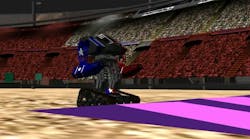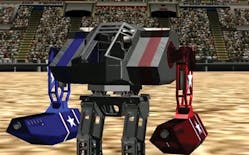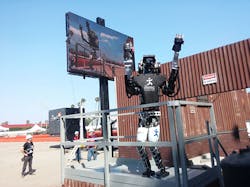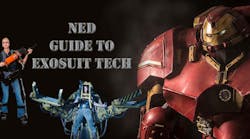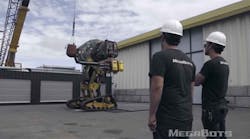For the 2015 DARPA robotics competition, the Institute for Human & Machine Cognition (IHMC) programmed a humanoid Atlas Robot to perform several emergency response tasks a human may have to after a disaster like the Fukishima meltdown. The rationale is if such a robot existed to open doors and twist shutoff valves, the 573 people who died from the tsunami-started nuclear accident may still be alive.
Now those same algorithms built by the non-profit spinout of the Florida university system to keep Atlas upright are being used on a real titan: MegaBots' Eagle Prime.
The 16-ft. robot won't be saving anyone anytime soon, as it was made solely to destroy equally sized mechs, but the control theory is the same.
"A lot of the software infrastructure is identical to what we use to control our powered exoskeleton, or fast running robot Atlas," says Peter Neuhaus, senior research scientist at IHMC.
The four contracted engineers from IHMC have implemented software to check control logic, how different buttons change operational states, and many more functions. Basically, the computer checks that the controls match up and interface with various components and sensors properly, so MegaBots can verify all systems work together fluidly.
Co-founders Gui Cavalcanti and Matt Oehrlein grew up playing mech combat video games, and testing Eagle Prime is not much different. They can see all of these tests in nearly real time simulations. For Eagle Prime's driver Cavalcanti — who previously worked at Atlas-maker Boston Dynamics — this may certainly help during the fight in September, as the simulation allows him to get a feel for how the 12-ton robot handles.
Knowing how tight a turn Eagle Prime can make during an evasive maneuver without tipping over will be crucial to win the fight and ensure Cavalcanti and gunner Matt Oehrlein make it out in one piece.
This type of software can also be applied to certain manufacturing applications.
"We wouldn’t simulate the throughput of a manufacturing plant, but we would be able to work with the motion planning or controls level," Neuhaus says.
Neuhaus says the biggest difference between working with Atlas and Eagle Prime is during hardware and safety testing with the actual robot, because size definitely matters with untested robots.
"The scale is imposing, but you are operating from a container 30 feet away," Neuhaus says." If there's a bug in the code, all of a sudden you could move a few thousand pounds in way you didn’t want it to."
He says in this respect, the 6-foot-2, 360 lb. Atlas is much more manageable.
If you're wondering why a research institution, even while getting paid, would pursue giant fighting robots instead of more life-saving ones, please note that one of Eagle Prime's hands is a logging grapple, so it'd make a great lumberjack, like a more realistic Paul Bunyan. And also, engineers are people, too!
"This is a little outside our research focus," Neuhaus says. "There's not a lot we would be publishing in academic journals. But our core competency is getting robots working."
Still, there is one big reason to take on "fun" projects such as this.
"We have a lot of young engineers, and keeping them excited about coming into work is important, and working with hardware is exciting," Neuhaus says. "Who doesn’t want to work with a 16-ft. tall, 30,000lb robot?"










